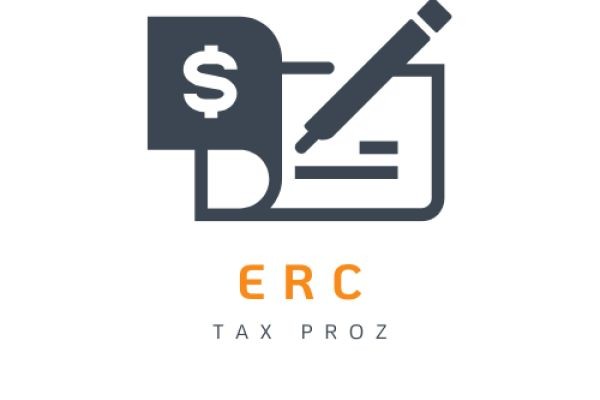The employee retention credit was created by the Coronavirus Aid, Relief, and Economic Security (CARES) Act passed in March 2020. It provides employers with refundable payroll tax credits up to 50% of wages paid per quarter, depending on certain criteria being met.
Employers should review all the details regarding qualification to ensure they meet all requirements needed and don’t miss out on these valuable funds.
Click here to get your estimate
Overview Of The Employee Retention Credit
The Employee Retention Credit is a tax credit made available to employers who keep employees on their payroll despite the economic hardship caused by COVID-19. This credit helps businesses offset some of their costs, so that they can continue paying their staff during this difficult time.
Eligibility for the Employee Retention Credit depends upon several factors, including whether or not an employer has had to reduce wages and/or staffing levels due to COVID-19 related closures and business losses. The amount of the credit also varies depending on how much money employers spend on keeping their employees paid through the end of 2020.
To qualify, employers must be in operation at any point after February 15th, 2020 and before January 1st, 2021. They must also have experienced more than a decrease in gross receipts when compared with the same quarter from 2019. Additionally, they need to pay qualified wages to retain employees during these periods.
Qualified wages include those paid up to $26,000 per employee over all quarters combined between March 12th, 2020 and December 31st, 2020.
Businesses may claim the Employee Retention Credit against eligible taxes like Social Security tax withholding or Medicare Tax Withholding.
To find out if you are eligible for this credit or learn more about filing requirements visit IRS publication 5124 or speak with your accountant or tax advisor for additional guidance.
Qualification Criteria
Employees may be eligible for a retention credit if they meet certain criteria. To qualify, employees must have been employed by the same employer during all of 2020 and 2021. They must make less than $64,000 per year and work at least 30 hours each week. The employee’s wages must also have decreased due to Covid-19 related reasons from one quarter in 2020 to the next or from 2019 to 2020.
Additionally, employers must apply for their employees’ credits through the IRS website. Employers can receive up to 70% of an employee’s wages with a maximum benefit amount of $6,000 per quarter. When submitting applications, employers need to provide proof that their business was affected by Covid-19 as well as documents proving the company paid its workers throughout this time period.
The government has set aside funds specifically for small businesses impacted by Covid-19 to help them cover some of their costs associated with retaining existing staff members. This type of assistance is designed so companies don’t have to lay off any more people because of financial hardship caused by the pandemic.
Employees who are able to stay on board with their current employer will be much better off financially than those who lose their job due to lack of support from the federal government.
This program is beneficial both for businesses and employees alike – it helps keep jobs intact while providing an income boost when times are tough. It’s important that everyone takes advantage of these resources available so our economy can get back on track faster following the coronavirus crisis.
Eligible Employers
It is clear that there are certain criteria to meet in order to be eligible for the employee retention credit. Now let’s take a closer look at who is eligible to claim this tax benefit.
Statistics show that almost 40 percent of employers with fewer than 500 employees were able to receive the credit when it was first announced back in 2020. This number has only increased since then, as more businesses and organizations have become aware of the opportunity.
Generally speaking, any employer with an average of 100 or fewer full-time employees during 2019 may be eligible for the employee retention credit. It does not matter if you are a corporation, partnership, nonprofit organization, self-employed individual, or one other type of business entity – if you meet all of the other requirements outlined by the IRS, you could qualify!
The amount of money available can also vary depending on your particular circumstances; however, most employers will be able to get up to $5,000 per quarter throughout 2021. To make sure you don’t miss out on this great chance to save money on taxes and keep your team employed, make sure you understand all the details regarding eligibility and qualifications so you know what steps need to be taken.
Wages Covered
The wages covered by the employee retention credit are important to understand. The credit is available for employers who pay their workers’ wages during certain times of economic hardship. This includes full-time and part-time employees, plus independent contractors or self-employed people in certain situations.
Employers can get a tax credit for up to 50% of qualifying wages paid from March 13, 2020 through December 31, 2020. Qualifying wages include any salary, wage, commission, or other payment that’s subject to federal income taxes, Social Security taxes and Medicare taxes under the Federal Insurance Contributions Act (FICA). It also covers health plan expenses like premiums and contributions to an employer-sponsored retirement plan.
The amount of eligible wages depends on how many employees work at a business. For businesses with fewer than 100 full-time equivalent employees, all qualified wages are eligible up to $26,000 per employee over the entire period they qualify for the credit. Businesses with more than 100 full-time equivalent employees may be able to claim only limited amounts of qualified wages per employee based on factors such as whether there was a reduction in workforce size or revenue decline.
To maximize this benefit it’s important to understand these rules thoroughly so you know what qualifies for a credit and what doesn’t. Working with a professional can help ensure your business takes advantage of this opportunity correctly and avoids potential penalties down the road.
Maximum Credit Allotment
Did you know that the average employee stays in their job for 4.2 years? That’s right, most people tend to stay with one company for quite a while! This means it can be beneficial for companies to offer incentives, such as an Employee Retention Credit (ERC).
But what is this credit and how much can employers get from it?
The ERC provides employers with refunds of certain payroll taxes. It allows them to keep more money coming in instead of having to pay out hefty taxes. The amount provided depends on several factors including wages paid during the calendar quarter and the number of employees retained.
Companies with fewer than 100 full-time employees qualify for up to $5,000 per worker over a two-year period – but there are other rules too. For instance, if salaries increase by 10% or more, then the employer may not be eligible for the entire amount.
Another important factor when looking at eligibility is repayment terms. Employers must agree to make payments back within a certain time frame in order to remain eligible for the tax refund. They also need to provide proof that they’ve made efforts to prevent layoffs and furloughs during these times as well as document any coronavirus related expenses incurred due to necessary changes in operations.
It’s essential that businesses do their research before applying so they understand all of their options and requirements thoroughly. Knowing exactly what type of credit they’re able to receive will help them plan ahead and ensure they don’t miss out on the maximum allotment available!
Filing Requirements
To file for an Employee Retention Credit, you’ll need to get your information ready. You’ll need to fill out IRS Form 941 and attach a copy of the credit calculation. This form is used to report employee wages and taxes for each quarter. It also has some sections that show how much credit you qualify for. Make sure you include all the info needed so your claim can be processed quickly!
You should also provide any other documents or records that prove you’re eligible for the credit. These could include things like payroll statements and bank statements showing payments made during the period covered by the credit. Make sure everything’s organized, accurate, and up-to-date before submitting it to the IRS.
When filing your return, make sure you put ‘Employee Retention Credit’ in big letters on top of page 1 of Form 941. If you don’t do this, there might be delays in processing your claim.
Also note that if you change any part of your business structure after claiming the credit, such as changing ownership or moving locations, then any credits claimed may have to be repaid in full!
Once all your paperwork is complete and ready to go, send it off with a completed Form 8849 (Claim for Refund). Sending this form will help ensure that all applicable refunds are credited promptly once approved by the IRS. So take care with it – otherwise there could be delays getting money back from Uncle Sam!
Claiming The Credit
Have you ever wondered how to claim the employee retention credit? It’s easier than you think!
In order to be eligible for this credit, employers must meet certain requirements. First, they need to have been in operation during 2020 and had their business partially or fully suspended due to orders from a governmental authority related to COVID-19. They also need to experience a significant decline in gross receipts compared with the same quarter of 2019.
Additionally, employers can only claim this credit if they are paying qualified wages during the suspension period or when there is a decline in gross receipts. Qualified wages include those paid up to $10,000 per employee over the course of 2020.
Lastly, employers cannot receive both tax credits at once — either payroll tax credits or wage payments through PPP loans and ERCs.
The amount that employers can get as an employee retention credit depends on several factors such as whether it’s based on full-time equivalent employees versus actual number of employees. If more than 100 FTEs were employed by the employer in 2019, then they will be able to claim 50% of total qualified wages with no cap; however, if fewer than 100 FTEs were employed then they will be able to claim 70% of total qualified wages with an annual limit of $10,000 per employee.
Claiming these credits is simple: employers just need to fill out Form 941 every quarter and complete Schedule R which helps them figure out what portion (if any) of their taxes may qualify for receipt of this credit each quarter when filing federal income taxes.
With all these guidelines met and paperwork filed correctly, employers should have no problem claiming their share of this important benefit designed to help keep businesses afloat during difficult times!
Other Important Considerations
When considering employee retention credits, it’s important to think about other things too. For example, employers should make sure they have a clear policy in place for how long employees must be employed before being eligible for the credit. It’s also important to know what kind of records need to be kept and reported in order for the credit to apply.
In addition, employers may want to look into any state or local tax regulations that could affect their ability to utilize the credit as well. Depending on where you are located, there could be additional requirements that employers must meet in order to get the full benefit of this type of incentive program.
Employers should take time to review IRS guidelines closely when setting up an employee retention credit plan. Knowing exactly what is required from both employer and employee can help ensure a successful program with minimal risk.
It’s also important for employers to pay attention to recent changes made by Congress regarding incentives such as these. Keeping abreast of current developments can help maximize benefits while minimizing potential compliance issues down the road.
Businesses should stay informed so they don’t miss out on opportunities that can save them money and keep their staff members happy and motivated.
Conclusion
Employee retention credit can make a huge difference for businesses struggling to keep their employees. It’s important that employers understand the eligibility and requirements before applying for this valuable tax benefit.
Taking advantage of this opportunity could help provide some much-needed relief, just like it did for one small business owner who was able to retain all her staff despite economic hardships. Thanks to the employee retention credit she now has peace of mind knowing she won’t have to lay off any of her valued team members.
With its helpful support, businesses can stay afloat during these difficult times and continue providing vital services to their communities.














